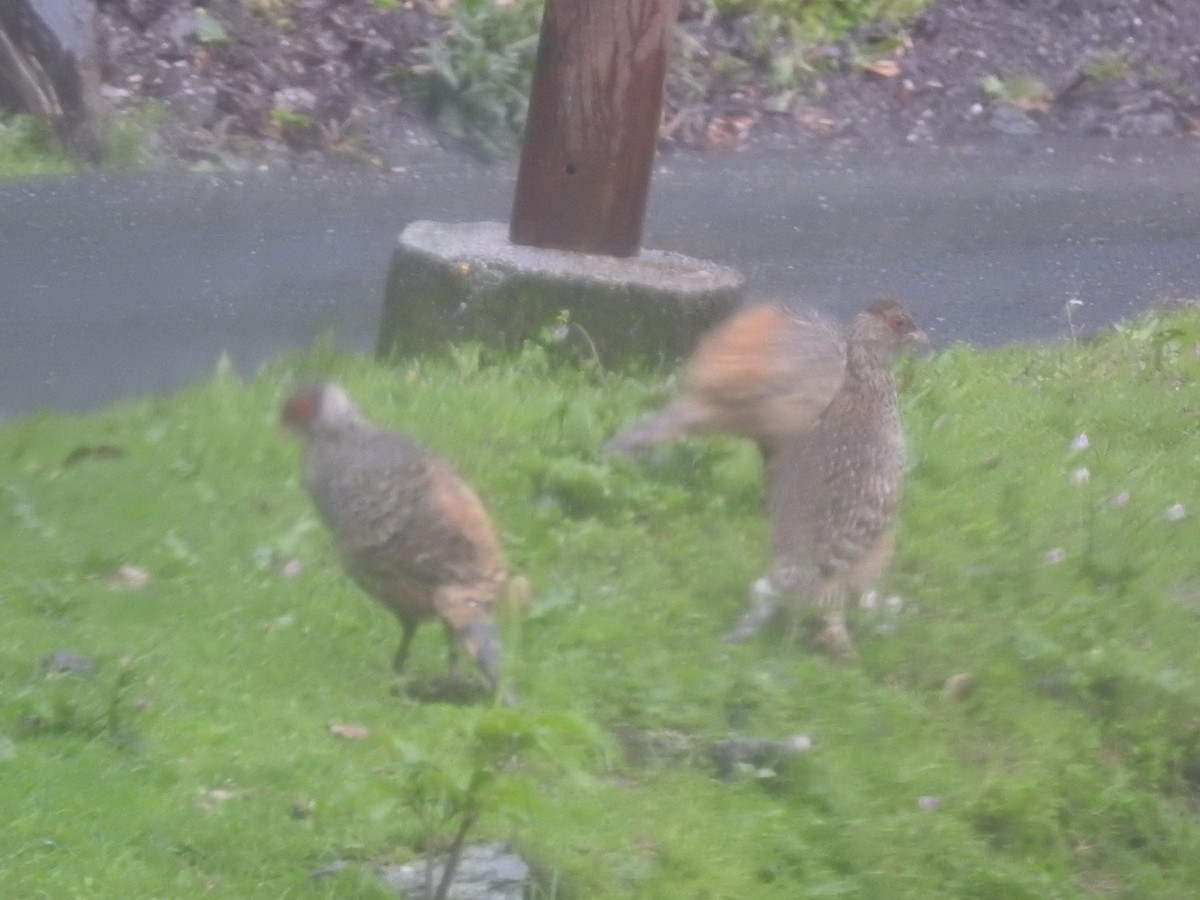Cheer Pheasant
A species of Cheer Pheasant Scientific name : Catreus wallichii Genus : Cheer Pheasant
Cheer Pheasant, A species of Cheer Pheasant
Botanical name: Catreus wallichii
Genus: Cheer Pheasant
Content
Description General Info
 Photo By Ashwin Viswanathan
Photo By Ashwin Viswanathan Description
These birds lack the color and brilliance of most pheasants, with buffy gray plumage and long, gray crests. Its long tail has 18 feathers and the central tail feathers are much longer and the colour is mainly gray and brown. The female is slightly smaller in overall size. 
Size
61 - 118 cm
Nest Placement
Tree
Feeding Habits
Cheer Pheasant primarily consumes plant materials, including roots, tubers, bulbs, and leaves from various species such as Poa annua and Fragaria indica. In spring and summer, its diet comprises specific plants corresponding to seasonal availability. Foraging by digging, sometimes deeply, cheer Pheasant may forage in groups of up to 15. While feeding on increased nitrogen in June suggests potential insect consumption, studies indicate an exclusively vegetarian diet.
Habitat
The habitat of cheer Pheasant consists of steep grassy and craggy hillsides, often accompanied by scrubland and scattered stunted trees. These birds are typically found in areas with secondary growth vegetation and rocky outcrops. They inhabit regions with mixed forests characterized by species such as oak, pine, juniper, fir, and rhododendron, often including disturbed or regenerated areas.
Dite type
Herbivorous
General Info
Feeding Habits
Bird food type
Behavior
Males are monogamous. They breed on steep cliffs during summer with a clutch of 10 to 11 eggs. In studies conducted in upper Beas Valley, cheer pheasant was found to be sensitive to human disturbance. 
Distribution Area
The cheer pheasant is distributed in the highlands and scrublands of the Himalayas region of India, Nepal, Kashmir, and Pakistan. They are found mainly in the west of Nepal, Kumaon, Garhwal, Tehri Garhwal, Simla States, Bussahir, Kullu, Chamba till about the Hazara District. Surveys in 1981 and 2003 in the Dhorpatan area of western Nepal established 70 calling sites, suggesting substantial numbers exist in this area (about 200 birds). In another survey in 2010, cheer pheasants were detected in 21 calling sites in Kullu district of Himachal Pradesh. They are found mainly above 6000 feet altitude and up to 10000 feet in summer. 
Species Status
Due to ongoing habitat loss, small population size, and hunting in some areas, the cheer pheasant is evaluated as vulnerable on the IUCN Red List of Threatened Species. It is listed on Appendix I of CITES. Attempts to reintroduce captive-bred cheer pheasants in Pakistan have been unsuccessful. 

 Photo By Ashwin Viswanathan
Photo By Ashwin Viswanathan